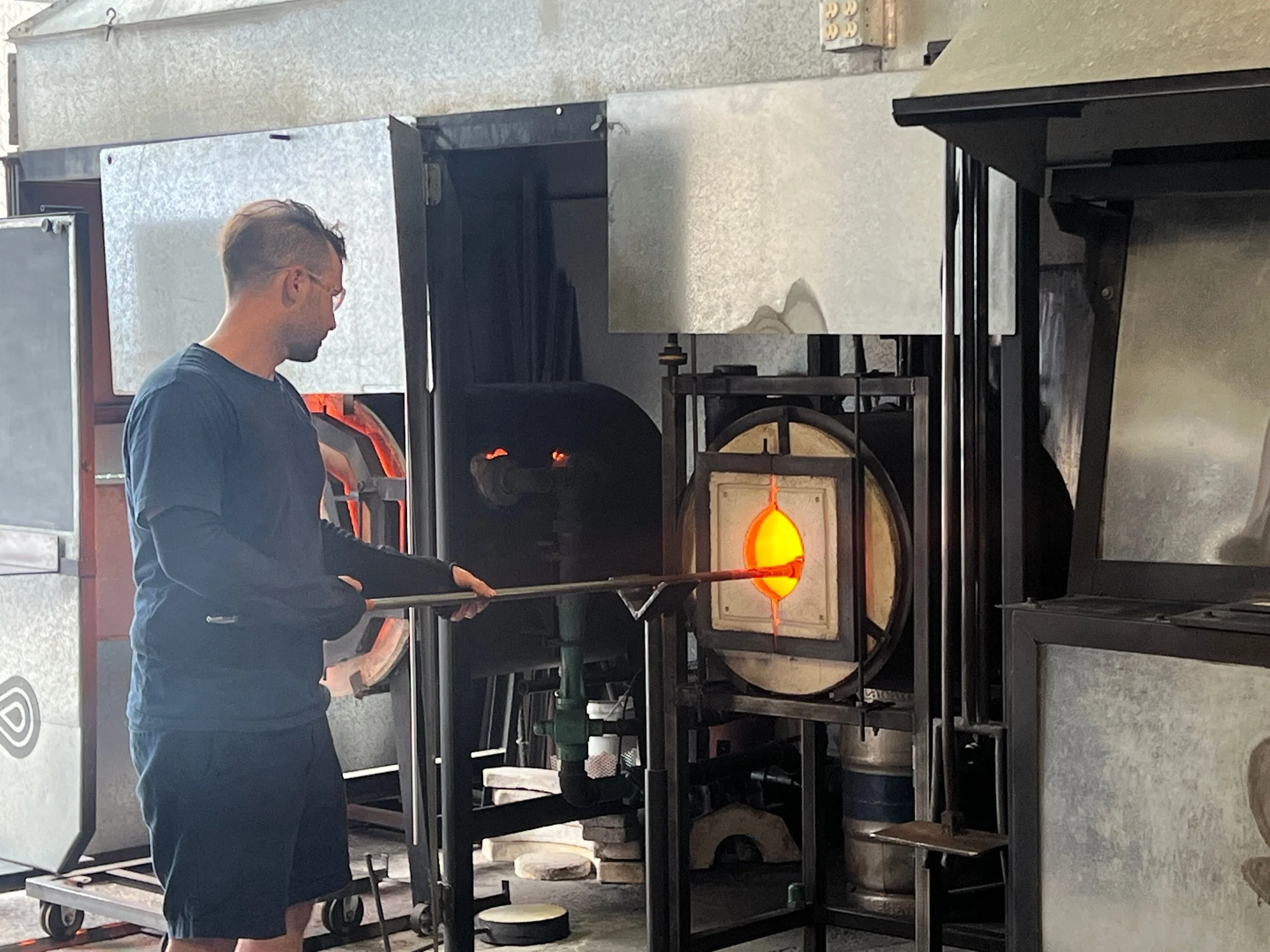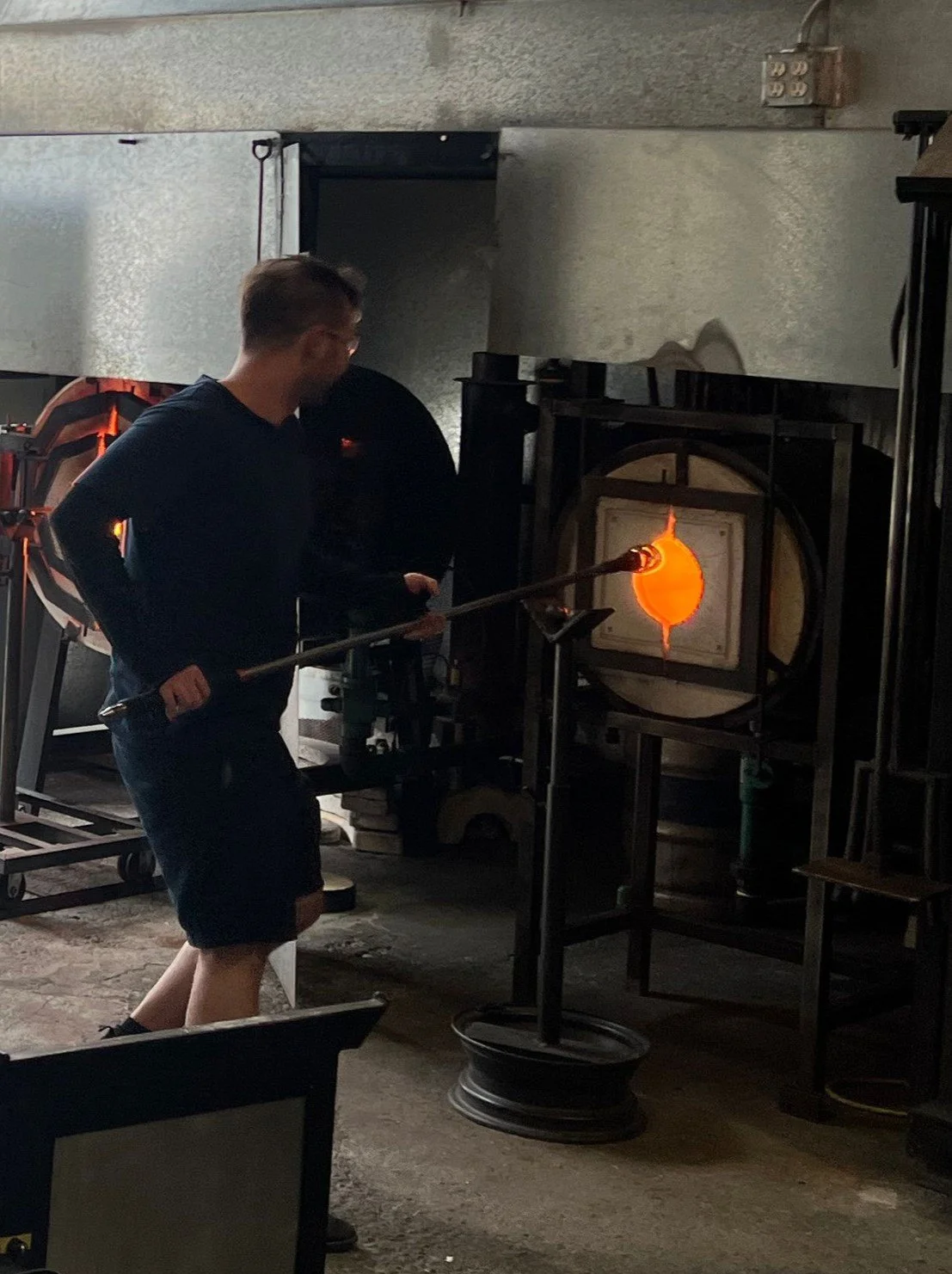The glass-blowing process requires many hours to master. Picking, handling, shaping and blowing is a multi step process which requires patience and a keen eye to understand when the best point to form the shape is. My attempt at the vase took multiple tries to get something large enough for this type of object, and during the blowing process the glass took the shape of a large lightbulb before partially deflating and creating an odd shape. With limited time to work with this was my best representative piece, and so I went with it as my final outcome.























